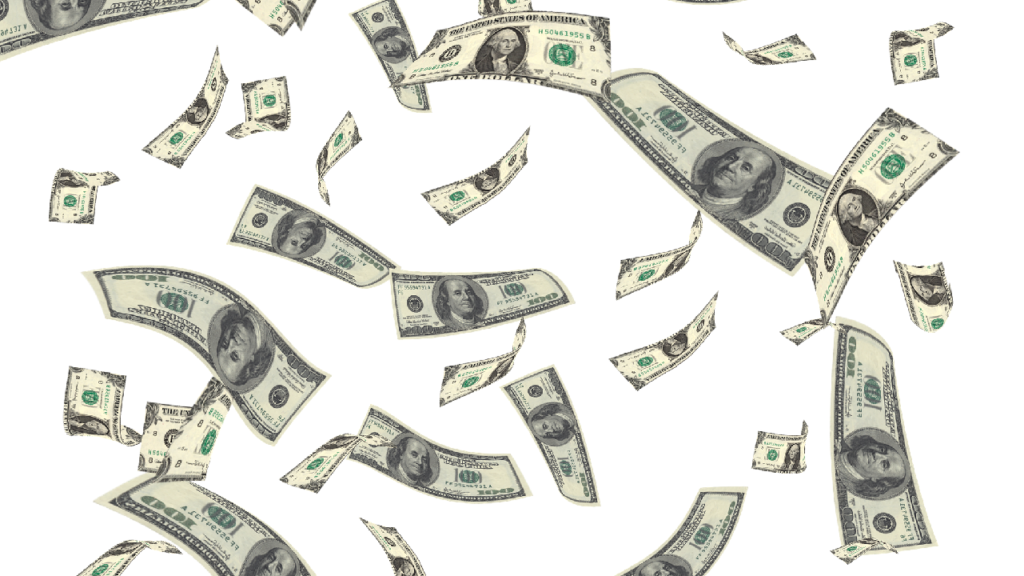Inflation Crashes the Party
by Peter Schiff, Schiff Gold:

It’s dawning on many investors that our post-Covid financial problems may not be as easily solved as Washington claims.
The latest clue that trouble is brewing has come from the sudden and dramatic arrival of inflation. On May 12, it was revealed that the Consumer Price Index (CPI) had risen 4.2% year-over-year, the fastest pace since 2008.
Some tried to downplay concern by pointing out that the gains resulted from the “base effect” of comparing current prices with the artificially depressed “Covid lockdown” prices of March and April of last year. But that ignores the more alarming trend of near-term price acceleration.
TRUTH LIVES on at https://sgtreport.tv/
According to the Bureau of Labor Statistics, in every month this year, the month-over-month change in prices has been greater than the change in the previous month.
In April prices jumped .8% from March, versus an expected gain of just .2%. Clearly, if this trend continues, or even fails to dramatically reverse, we could be looking at inflation well north of 5 or 6 percent for the calendar year. That would create a big problem.
Despite Federal Reserve officials’ recent assurances that the inflation problem is “transitory,” many investors are concluding that the central bank will have to deal with this problem by tightening monetary policy far sooner than had been expected. This would make sense if the Fed cared about restraining inflation or, more importantly, had the power to do anything to stop it. In truth, we are sailing into these waters with little ability to alter speed or course, and we will be wholly at the mercy of the waves we have spent a generation creating.
Since the era of central bank activism kicked into high gear in 2008, with the quantitative easing programs created in the wake of the Financial Crisis, the U.S. economy has largely avoided the spike in consumer prices that would typically result from monetary stimulus. It is my belief that the injection of trillions of new dollars into the economy merely offset the downward trajectory of prices that should have occurred during a severe recession. But more significantly, the money the Fed created at the time flowed more directly into assets rather than consumer goods.
Interest rate suppression, which is the mechanism of quantitative easing, stimulates the economy through the financial system. Low interest rates encourage more borrowing and have the effect of pushing up asset prices, particularly for stocks, bonds, and real estate. That explains why the era of QE was particularly good for those people who owned lots of those assets (the rich). Lowering the cost of capital also helped businesses hire and expand, thereby increasing the supply of goods and services, keeping consumer price inflation in check. More importantly, a strengthening dollar from 2011-2020 helped keep import prices low and helped sustain rising trade deficits. This allowed us to “export” our inflation to our trading partners as the dollars printed by the Fed flowed out, while real goods flowed in. However, many of the dollars earned by our trading partners were recycled into our financial markets, namely into large-cap tech stocks, adding fuel to the growing asset bubble.
But the stimulus we have seen in the post-Covid world works on a very different level. Although the Fed is currently engaging in a quantitative easing program that is almost 50% larger than it was at its peak a decade ago ($120 billion per month in bond buying now vs. $85 billion then), the real bulk of the Fed’s efforts now involve underwriting the Government’s massive direct stimulus program, which has totaled more than $4 trillion in direct payments to businesses and individuals since March of 2020. According to the CBO, in 2021 more than 40% of the $5.8 trillion expected to be spent by the Federal Government will be financed by debt issuance rather than taxation. The bulk of that debt is financed by Fed money creation. (These figures do not include the $2 trillion in unpaid for infrastructure spending that is currently working its way through Congress.)
Throughout much of the past decade, mainstream economists urged that stimulus effort needed to pivot from the “monetary stimulus” of quantitative easing to the “fiscal stimulus” of government deficit spending. Now we see that since deficit spending is simply financed by monetary expansion, the two are roughly one in the same. But each effects the economy in slightly different ways.
This current stimulus of direct payments to consumers, businesses, and governments, results in spending which creates demand for goods and services. The problem is that this demand is occurring at a time when the supply of goods and services is being artificially suppressed. Through a variety of enhanced unemployment benefits, child-care tax credits, direct stimulus payments, and increased welfare benefits, the government has created conditions where millions of low-income workers make the rational choice to stay home. Recent calculations by Bank of America estimate that workers who earned $32,000 annually before the pandemic could receive more money on unemployment than they would from actual work.
Under these pressures, it should come as no surprise that the April jobs report showed only 266,000 new jobs created when almost one million were expected. Employers were looking to hire, but far fewer people were willing to work. This explains why the labor force is still eight million jobs smaller than it was before the pandemic, even as the economy has largely reopened.
So, we find ourselves in a situation in which the government is simultaneously increasing demand and reducing supply. This is the classic recipe for consumer price increases, and it is showing up in force. The bad news is that nothing on the horizon suggests that government policy will change to address the crisis. History shows that once consumer price increases take hold the cycle becomes very slow to change and hard to break. The experience we had in the last era of catastrophic inflation provides a harrowing example.
The average CPI increase from 1960-1965 was just 1.3%. But in 1966, because of the major increases in deficit spending resulting from the Vietnam War and LBJ’s Great Society, the CPI jumped to 2.9%. It did not fall below 2% again for any calendar year until 1986, a cycle of 20 years. During that period, the CPI (despite continual methodological adjustments which sought to minimize the results) averaged 6.4%. This meant that by 1987 prices had risen by a factor of more than 3.5 times from the base in 1965, causing the dollar to lose 73% of its value over that time.



